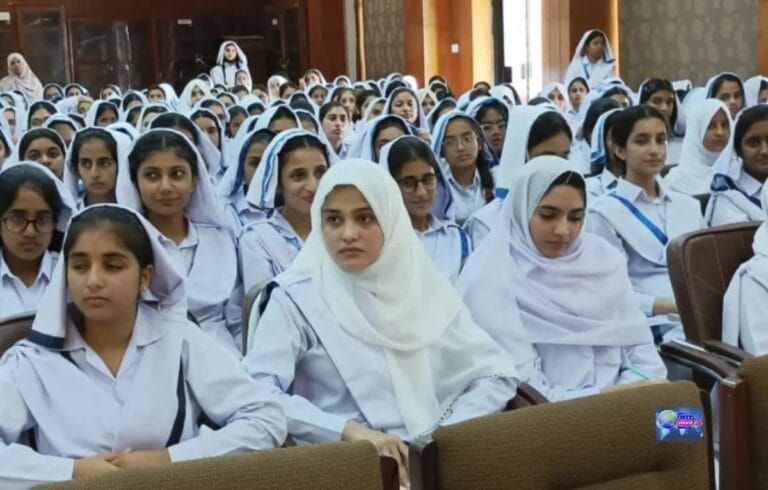The announcement of the Matric and Intermediate Results in Pakistan has created a wave of anticipation among students and parents across the country.
Educational boards, including those of Karachi, Lahore, Punjab, and Sindh, are gearing up to release results for science, arts, commerce, and computer science groups in the coming weeks.

“Matric & Inter Results: A Turning Point for Students’ Academic Futures”
These results are important because they influence students’ academic futures, determining admissions into colleges and universities for higher studies.
With lakhs of students awaiting their marks, education authorities have assured that the process will be transparent and timely, ensuring that merit is maintained across all streams.
- Matric (Class 10) results for the Punjab Boards were officially announced on 24 July 2025 at 10:00 AM. Students in Lahore, Multan, Sargodha, Rawalpindi, Bahawalpur, Gujranwala, DG Khan, Faisalabad, Sahiwal, and other Punjab districts can check their results online or via SMS.
- In Karachi (Sindh), the Board of Intermediate Education, Karachi (BIEK) has released the Science General Group HSSC Part II result for 2025: out of ~16,842 registered students, around 55.6% passed. The result includes the top merit list, with the highest marks above 89% in some cases.
- The Board of Secondary Education Karachi (BSEK) has also announced the Matric Science Group results for 2025. The official result portal currently displays the practical marks, status, and general results.
- BISE Lahore announced the 9th class result on 20 August 2025 at 10:00 AM. Key stats: the science group had about a 47% pass rate, while the arts group had only a 37% pass rate. The performance of private schools was significantly better than that of government schools; girls outperformed boys in both streams.
- For Punjab Inter (HSSC Part II), the result date for 2025 was set for 18 September 2025 for most boards (Lahore, Multan, Gujranwala, etc.). This includes all streams—Science, Arts, and Commerce/Computer Science—with results accessible online, via SMS, and through official gazettes.
- The Board of Intermediate & Secondary Education (BIEK), Karachi, has published the merit list and grades for the Science General stream in the HSSC Part II exam, along with grade-wise statistics (A-1, A, B, etc.).
Admission Process in College After Matriculation
1. Announcement of Admissions
- Soon after matriculation results are declared, colleges publish admission notices in newspapers, official websites, and social media pages.
- Both government and private colleges announce limited seats for science, arts, commerce, and computer science groups.
2. Collection of Admission Forms
- Admission forms are usually available online through the respective board/college websites or can be collected from the college admission office.
- Forms include personal details, marks obtained in matriculation, and the preferred faculty/group (pre-medical, pre-engineering, ICS, I.Com, humanities, etc.).
3. Submission of Documents
Applicants must attach:
- Matriculation result card or marks sheet (provisional results are often accepted).
- Character certificate from the last school attended.
- Recent passport-size photographs.
- A copy of the B-Form or CNIC, along with a copy of the father’s CNIC, is required.
4. Merit List Preparation
- Colleges prepare merit lists based on matriculation marks.
- High-demand colleges (especially in Lahore, Karachi, and Islamabad) set competitive merit percentages for pre-medical and pre-engineering streams.
5. Display of Merit Lists
- First, second, and sometimes third merit lists are displayed.
- Students whose names appear on the merit list must confirm admission within the given deadline.
6. Fee Submission and Confirmation
- Selected students pay the admission/tuition fee by the due date to confirm their seat.
- Failure to deposit fees on time results in the cancellation of admission.
7. Orientation and Start of Classes
- Colleges announce the commencement of classes soon after completing admissions.
- Orientation sessions guide students about subjects, rules, and extracurricular activities.
Admission Process in Private Colleges After Matriculation

1. Admission Announcements
- Private colleges usually start admissions soon after matriculation results are announced.
- Admission notices are shared on official websites, social media, and through prospectuses available at campuses.
2. Prospectus and Application Form
- Students purchase the prospectus, which includes the application form and details of available programs (pre-medical, pre-engineering, ICS, I.Com, humanities, etc.).
- Many private colleges also offer online admission forms for convenience.
3. Submission of Required Documents
Applicants must submit:
- Matriculation result card (original/provisional).
- A character certificate from the last school attended is required.
- Copies of the B-Form/CNIC and parents’ CNIC.
- Recent photographs (as per college requirement).
4. Entry Test/Interview (If Applicable)
- Some well-reputed private colleges conduct short entry tests or interviews to assess student aptitude, especially for science and ICS groups.
- Others rely solely on matriculation marks for selection.
5. Merit and Selection
- Unlike government colleges, private institutions are relatively flexible with merit.
- They often accept students with lower percentages but may offer scholarships or discounts to high-achieving students.
6. Fee Structure and Payment
- Private colleges have higher tuition fees compared to government institutions.
- Students must pay the admission fee, security deposit, and first-semester/first-month tuition fee to confirm admission.
- Installment and scholarship options are available in many institutions.
7. Orientation and Academic Session
- After the fee submission, students receive their timetable, ID cards, and academic guidelines.
- Orientation sessions help students settle into their new environment.



